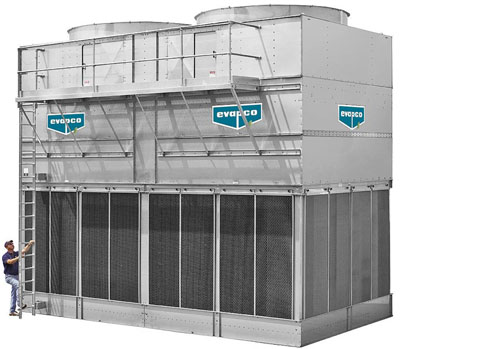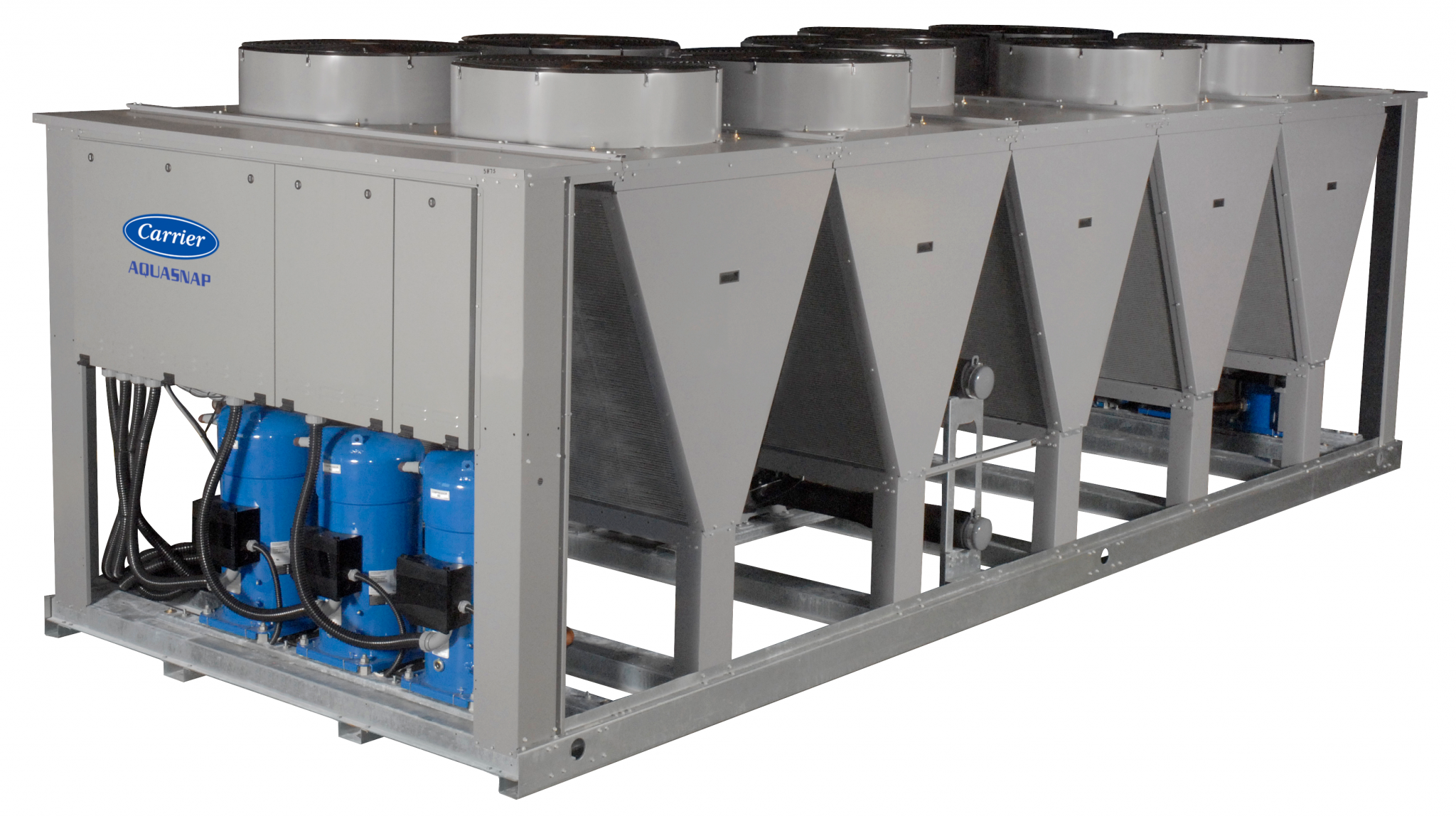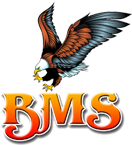The main objective of chillers and cooling towers is to remove heat from a solvent in the liquid state. These systems provide effective cooling solutions. However, there are major differences between tower cooling systems and chillers. Therefore, if you’re opting to purchase a cooling system, analyze your needs before investing your money. This is because certain equipment is best suited for certain contexts. Selecting an inappropriate cooling system will lead to increased utility bills and poor performance because they should be used in different settings.
Cooling Tower
A cooling tower is a heat exchanger unit whereby hot water and cooler air come into contact to lower water temperatures in the industrial plant. Mixing cooler air and hot water releases latent heat of vaporization, thus cooling water. As a result, some water is evaporated to create a cooling action.

Types of Cooling Towers
Cooling tower units are fundamental to industrial processes. Choosing a system that suits your needs as well as preferences is important because there are different types of cooling towers. Cooling towers are classified either by the direction of airflow or by the type of draft. Note that the draft can either be mechanical or natural. The large size of the cooling towers increases the surface area of condensation. Below are the common types of cooling towers:
- Hyperbolic Cooling Towers
These systems require minimal resources to function. They’re well-built and can manage large-scale water cooling within a plant. Hyperbolic cooling towers use a chimney stacking technique to lower water temperatures. This technique allows the cooler air to push the warmer air inside the system, thus creating an effective cooling action.
- Cross-flow Cooling Towers
Cross-flow cooling towers are quite expensive, but they’re worth it. This is because they require minimal maintenance. However, they’re more prone to frost, especially when compared to other systems, including counter-flow and hyperbolic cooling towers. In this system, air flows horizontally, whereas water flows vertically through the fill.
- Counter-flow Cooling Towers
Counter-flow systems are usually smaller than cross-flow systems. In a counter-flow cooling tower, the in-flowing cooler air travels in a vertical path. This is the key reason why you can’t utilize open, gravity-flow basins. Instead, you should invest in pressurized, pipe-type spray units. The nozzles and pipes should be farther apart to improve airflow.
- Factory Assembled Cooling Towers
These units are ideal for industrial and HVAC applications that require minimal cooling. These systems can be customized depending on your needs. Some people opt for factory-assembled cooling towers because they are easy to install and transport.
In addition, other cooling tower systems are induced draft cooling towers, forced draft cooling towers, and field erected cooling towers.
Components of Cooling Towers
– Drift Reducers
– Nozzles and fill media
– Gearboxes and fans
– Air intake louvers
– Driveshafts and electric float valves
– Reservoir heaters
Cooling Tower Maintenance
Maintaining your cooling tower will play a significant role in improving the functioning ability of the overall system. In addition, it improves the longevity of your unit. The maintenance of a cooling tower depends on the type of system application. A dirty, malfunctioning system can compromise the health of your employees and visitors. Below are some of the top tips for maintaining a cooling tower:
– Keep the tubes sparkling clean
– Eliminate scale deposits
– Inspect the water pump regularly
– Treat the water
– Keep airflow running
Water quality prevents premature system problems, such as scale and scum buildup. An efficient pumping system will lower your monthly utility bills. Evaporation in the tower is the main culprit for scale deposits.
Chillers
Chillers are gaining popularity in various commercial facilities, including sporting arenas, hotels, industrial plants, restaurants, hospitals, etc. Chillers facilitate heat transfer from one location (internal environment) to another (external environment). Chillers are used in refrigeration systems to thaw water, refrigerate fluid, or cool water. You can use water or a glycerol solution to move the heat to and from the chiller.

Types of Chillers
There are numerous types of chillers in HVAC units. Choosing the right chiller will minimize downtime, lower cooling costs, and enhance operational efficiency. Below are the key types of chillers:
- Air-Cooled Chillers
An air-cooled chiller has two fans that prevent heat from the external environment. These systems rely on either screw compressors or scroll compressors. Air-cooled chillers can also be termed modular chillers because you can stack them horizontally to increase the surface area of cooling.
- Centrifugal Chillers
Sometimes, centrifugal chillers can be referred to as water-cooled chillers. These units use centrifugal compressors and water to absorb heat in the commercial building.
- Magnetic Bearing Chiller
Magnetic bearing chillers can also be termed oil-free chillers. This is because they don’t rely on any lubricant to function. These systems have a high efficiency which occurs as a result of low friction.
- Hybrid Chillers
A hybrid chiller is a combination of a cooling tower and an air-cooled chiller. These systems rely on evaporation as a means of reducing water temperatures, although they have fans. Outdoor wet-bulb temperatures affect the functionality and performance of hybrid chillers. This is because they rely on the evaporative cooling principle.
In addition, heat recovery chillers are the other major type of chiller that you’ll find in HVAC systems. These units can also be termed heat reclaim chillers. Heat recovery chillers are usually big in size because they have an extra condenser for the heat recovery process.
Components of Chillers
– Condenser
– Compressor
– Expansion Valve
– Evaporator
– Controls and water boxes
– Power units
Chiller Maintenance
Routine maintenance of chillers is required to extend the life span of the asset and maintain high uptime. In addition, a well-functioning chiller will save your monthly energy bills. Some of the main tips for commercial chiller maintenance include the following:
– Maintain adequate refrigerant charge
– Analyze compressor
– Check operation of motors and starters
– Install variable speed drives
– Prevent inefficiencies that occur as a result of non-condensable
Cooling towers require water to function, whereas chillers don’t need it. Instead, chillers use liquid refrigerant fluid. Both cooling towers and chillers are used for cooling purposes, but they’re applied differently.
Mechanical Contractor in Washington DC, Virginia, and Maryland
If you are looking for commercial HVAC maintenance and want a reliable company that focuses specifically on commercial systems, give us a call at 703-649-2977 or request service here.
